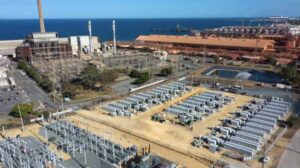The future of Australia’s electricity system might be about to get much clearer, with a detailed proposal for a post-2025 shake-up of Australia’s main electricity market expected to be released publicly as early as next week.
The Energy Security Board has prepared a detailed proposal for reforms to the National Electricity Market, which is expected to include calls for an expanded role for demand response services and distributed energy resources, and greater coordination of investments in new network infrastructure to enable continued growth in new wind, solar and storage capacity.
Already, a taste of what might be expected has been unveiled in decisions by the Australian Energy Market Commission, including the newly unveiled market for fast frequency response that will encourage battery storage, wind and solar to deliver the services needed to keep the lights on.
However, there is concern about what else might be included, particularly with some of the key reform proposals being developed by delegates from big energy market incumbents, including the operators of Australia’s fleet of ageing coal-fired power stations currently being squeezed out of the market by lower-cost wind and solar.
Incumbents have already used the post-2025 re-design process to argue for greater financial recognition of grid stability services provided by large thermal generators, such as system inertia and voltage and frequency control measures.
There are growing fears the Energy Security Board will recommend the creation of what will effectively amount to a capacity market in Australia’s main grid – which could see coal and gas generators paid to remain operational in a bid to delay their closure.
An option under active consideration are reforms to the Retailer Reliability Obligation (RRO), an existing mechanism that requires electricity retailers to have sufficient contracts in place to either guarantee the supply of electricity during spikes in electricity demand or have sufficient financial contracts in place to shield their customers from spikes in electricity prices.
Reforms to the RRO being considered by the Energy Security Board would increase its emphasis on “physical” contracts for dispatchable power, forcing retailers to contract directly with coal and gas generators and effectively underwrite their continued participation in the energy market.
It could amount to an effective subsidy for fossil fuel power stations, despite a growing body of analysis that shows policies to keep coal and gas generators operational is unnecessary.
Analysts have suggested that renewables, combined with zero emissions forms of energy storage, would be sufficient to maintain reliable supplies of power. But the focus of Taylor, including in the government’s announcement this week, has been on fossil fuel and related technologies.
“What is most concerning stakeholders is that Angus Taylor has not declared his hand and appears to be pushing for a way to bend the market to prop up unprofitable coal power stations,” The Australia Institute’s Dan Cass told RenewEconomy.
“The mechanism for this would be the ‘physical’ retailer reliability obligation. This proposal is widely seen as a very bad idea. It would mean that in 2021, as the world is lifting climate ambitions, the Australian government is inventing a new subsidy for coal.”
The detailed re-design options paper was delivered to Taylor at the end of March and is expected to be distributed to state and territory energy ministers before being released publicly. The Energy Security Board intends to undertake six weeks of consultation once it is finally published.
The report will be considered through the National Cabinet energy reform sub-committee, allowing Taylor to control the timing of the report’s release and places the report under federal cabinet rules, forcing otherwise vocal state and territory ministers to remain tight-lipped about concerns they may have about the proposed reforms.
The report was originally planned for public release by the end of March, but it is now expected to happen as early as next week, almost a month behind the original schedule.
“The Post 2025 re-design was commissioned by ministers meeting as equals at COAG Energy Council. Angus Taylor has pulled it into the Energy National Cabinet Reform Committee to take control,” Cass said. “State energy ministers, NEM market bodies, the energy industry and stakeholders are all in the dark.”
“The ESB Options Paper is a document intended for public consultation, and keeping it secret is simply media management. Why is the Morrison government so scared of independent advice from experts on climate and energy?”
See also: Big boost for battery storage in new rules that reward fast response on grid.
And: Batteries, solar and wind can easily maintain grid security as coal retires.










